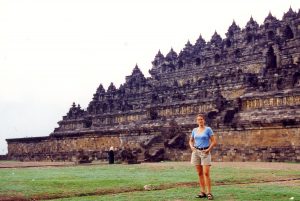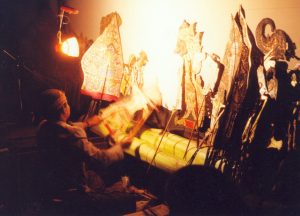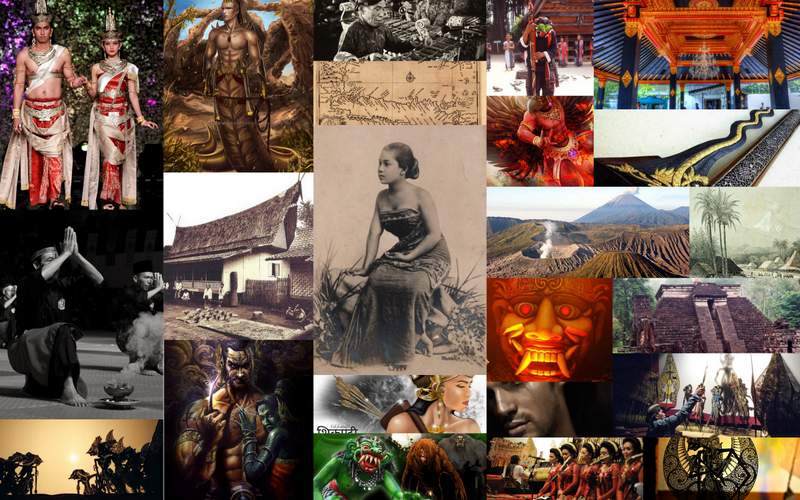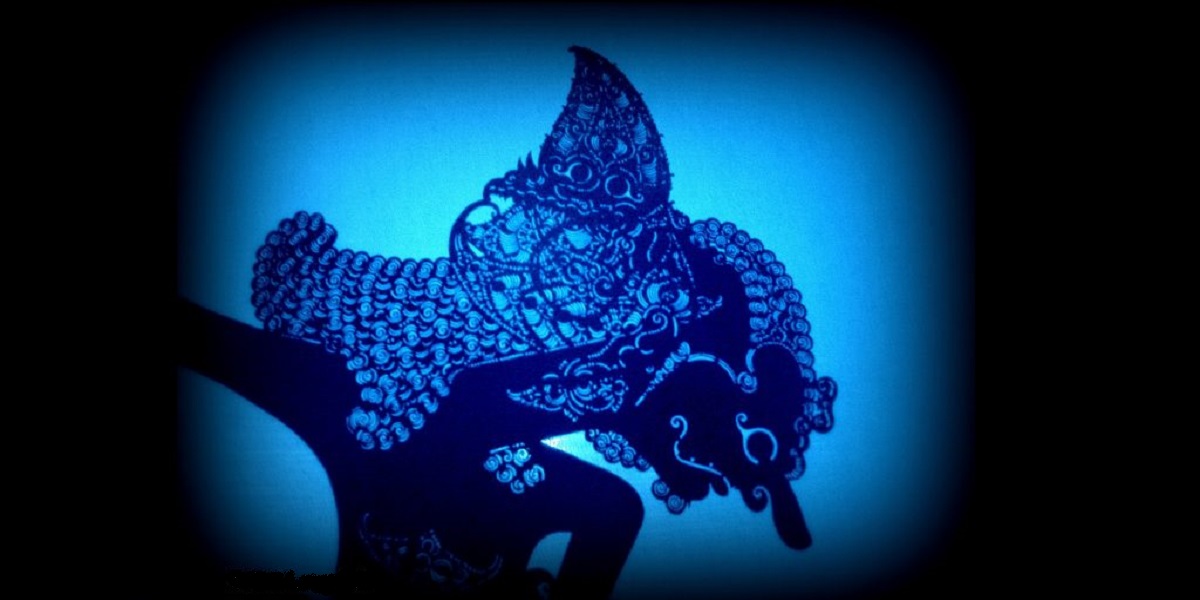My novel, The Dead Wind, is inspired by an art form I love and admire: the Javanese wayang kulit (shadow play).
The Wayang

Many years ago, I lived in a small town in central Java called Surakarta. During my year in Indonesia, some of my favourite pastimes included sampling the local fare, visiting the sights for which Java is famous, such as Borobudur and Prambanan, and attending wayang performances.
The wayang was a truly transcendent experience. If I couldn’t attend a performance, I loved sitting by my bedroom window, listening to it from afar. As the dalang (puppeteer) worked his shadowy magic, the audience would be transported to an enchanted world inhabited by mythical kings, bloodthirsty monsters, scheming courtiers, and vengeful gods. The visual spectacle was accompanied by an auditory feast that included the percussive sounds of a gamelan orchestra, the soothing cadences of suling (flutes), the shrill voices of the sindhen (female singers) and, most importantly, the deep, lulling narration of the dalang.

While its origins are obscure, the wayang is a thoroughly Javanese art form, and the fact that many of the plays in the dramatic repertory are based upon two Indian epics—the Mahabharata and the Ramayana—does not in any way diminish the essential Javanese-ness of the wayang. When seeking inspiration for stories about the five Pandawa brothers (the heroes of the Bhāratayuddha), contemporary dalang look to the Pustaka Raja Purwa. Written by the nineteenth century court poet Ronggawarsita, this chronicle of Javanese history contains a rather striking fusion of local and foreign narratives, claiming Javanese kings and princes descend directly from the heroes of the Indian epics! Ultimately, most wayang plays are inventions of the dalang that are inspired by, rather than drawn from, the Javanese variants of the epics. A distinction is made between the two, i.e.: plays drawn from the epics are called lakon pokok (trunk), whilst those created by the dalang are called lakon carangan (branch). Given that the invented plays are said to contain the true spirit of the wayang, I’ve been inspired by the example set by countless dalang to create my own “carangan” tale.
In Surakarta, the wayang was always performed in a local dialect of Javanese. Though I had a respectable grasp of Bahasa Indonesia, the official language of the country, I didn’t speak or understand any of the status-variant forms of Javanese, i.e.: ngoko,madya, krama, krama inggil (high Javanese), or basongan (a form of high Javanese used only in the kraton, or palace). Since I couldn’t understand what was being said during the plays, I typically invented my own stories—and therein lies the genesis of The Dead Wind. This modern adaptation of Javanese renderings of an ancient Indian epic is uniquely my own, a lakon carangan in every sense, as different from the Javanese renderings of the Indian Mahabharata as can be, yet inspired by the Javanese tales nonetheless.
The Dead Wind

THE DEAD WIND is a mythic fantasy that retells an ancient Javanese epic through the eyes of several women:
- a headstrong princess determined to save her sister;
- an exiled queen forced to find a new home for her family;
- a petulant goddess yearning for companionship in a hostile realm;
- a manipulative courtier scheming to put her eldest son upon the throne;
- a ravenous beast desperate to survive; and
- a poor peasant ordered to protect the children of a vindictive King.
Despite their differences, these women know the emptiness of loss and share a common goal: protecting their kin.
